If you’ve ever caught a musty smell when your HVAC kicks on, wondered why your allergies seem worse indoors, or questioned whether mold might be hiding where you can’t see—it’s time to get clear answers. Mold in air ducts is more common than many realize, and when left unaddressed, it can affect both your health and your home.
What Causes Mold To Grow in Air Ducts?
Mold is opportunistic. It needs only three things to thrive: moisture, warmth, and organic material. Unfortunately, duct systems often check all three boxes.
Moisture and Condensation in the System
If your air ducts are located in humid areas or near a poorly sealed crawl space, they may be trapping excess moisture. Condensation from the cooling coil in your HVAC system, especially if drainage is poor, creates an ideal breeding ground.
Poor Ventilation and Insulation Issues
If your home isn’t well-insulated, especially in basements or attics, the temperature difference between inside and outside air can cause condensation inside ducts. Poor airflow can leave stagnant pockets of humid air, feeding mold growth.
HVAC Design Flaws That Create Mold-Prone Conditions
Ductwork with sharp turns, low airflow, or hidden leaks can collect debris and moisture. These issues often go unnoticed but play a huge role in mold development.
External Contaminants from Crawl Spaces and Basements
In Western Washington, damp crawl spaces are a common culprit. If yours isn’t sealed or waterproofed, mold spores can enter the HVAC system through return vents or air leaks and spread through your heating and cooling system.
How Mold Spreads Through HVAC Systems
The Role of Air Circulation in Mold Distribution
Your HVAC system circulates air through every room in your home. When mold is present inside the ducts, tiny mold spores travel with that air, contaminating your indoor environment.
Why Central Air Can Make Mold a Whole-House Problem
Once spores are airborne, they’re not confined to one area. Mold in your ducts can spread to walls, ceilings, upholstery, or even other HVAC components like coils and filters.
The Difference Between Surface Mold and Systemic Infestation
Not all mold issues are visible. Some infestations are hidden deep within the system—behind vent covers or in insulated ducts—where surface cleaning won’t cut it.
Health Risks of Mold Exposure Through Air Ducts
Even low levels of mold exposure can lead to significant health effects, especially if the exposure lasts over time.
Respiratory and Allergic Reactions
If you notice sneezing, coughing, itchy eyes, sinus irritation, or throat discomfort, it might be a good idea to take a closer look at your symptoms; if they improve when you’re away from home, your indoor air quality may be the issue.
Hidden Risks for Children, Elderly, and Immunocompromised
If you or someone in your household has asthma, allergies, or a weakened immune system, the risk is even greater. Mold spores circulating in your air can trigger serious reactions, especially if you’re sleeping in a room where the vents are contaminated.
Is It Safe to Sleep in a House With Mold in the Vents?
In short: no. Even if you can’t see the mold, sleeping near contaminated vents exposes you to mold spores night after night, increasing your risk of long-term health issues.
Signs To Look Out For
You might not notice the mold right away, but here are some signs to keep an eye (and nose) out for:
- Musty or earthy odors, especially when the HVAC system starts
- Visible mold or dark stains around vent covers
- Increased humidity level indoors
Persistent allergy-like symptoms or unexplained health risk concerns - Dust building up quickly, even after regular cleaning.
How Professionals Find Mold in HVAC Systems
Tools and Technology Used by Certified Duct Cleaners
Professionals use moisture meters, flexible inspection cameras (borescopes), and microbial swabs to find mold inside your duct system.
Air Quality Testing vs Surface Swab Testing
Air tests show how many mold spores are floating in your air, which helps evaluate indoor air quality. Swab tests identify what type of mold is growing on surfaces, which can give us an idea of the level of threat.
Why DIY Tests Miss the Mark
At-home mold kits often give false positives or misidentify the problem. They can’t pinpoint the source or severity of an infestation.
How to Get Rid of Mold in Your Air Ducts
Cleaning vs. Remediation—What’s the Difference?
A basic cleaning clears out surface-level grime. Full mold removal or remediation digs deeper, eliminating the mold and fixing what caused it to grow in the first place.
Safe and Effective Mold Removal Methods
NADCA-certified professionals use HEPA vacuums, EPA-registered disinfectants, and mechanical agitation tools to clean and sanitize duct interiors safely and thoroughly.
When You Need Professional Help vs When You Don’t
If mold is inside your ducts or moving through your hvac system, this isn’t a DIY job. Off-the-shelf sprays can’t reach the full problem, and disturbing mold without proper tools can release even more spores.
Will Cleaning Air Ducts Really Make a Difference?
The Impact on Indoor Air Quality
Professional duct cleaning boosts airflow, removes allergens, and eliminates the places mold thrives. You may notice better sleep, easier breathing, and fewer strange smells.
Mold Recurrence Without Cleaning: Why It Happens
If you skip cleaning after a mold issue, you’re asking for trouble. Even if you kill the mold, leftover debris and excess moisture can bring it right back.
Preventative Steps
To keep mold away long-term:
- Use dehumidifiers and ventilate properly
Seal up leaks in crawl spaces, attics, and ducts - Stay on top of HVAC inspections
- Replace your air filters every 1–3 months
- Schedule regular duct cleaning if you’ve had moisture problems
Common Myths About Mold in HVAC Systems
“If You Can’t See It, It’s Not There”
Wrong—most mold issues are out of sight and spread before you ever notice.
“Bleach Kills All Mold”
Bleach can’t soak into porous materials and might even make things worse by spreading spores.
“Only Old Homes Have This Problem”
Newer buildings without proper sealing or ventilation can be just as vulnerable to mold growth.
Why Trust Capitol Duct Cleaning With Your Air Quality?
At Capitol Duct Cleaning, we know what it takes to restore clean, healthy air. We’re veteran-owned, locally operated, and NADCA certified. Our crew shows up on time, treats your space with care, and gets the job done right—the first time. Whether you’re dealing with mold now or just want peace of mind, we’re here for you.
Let’s get your air clean again—because fresh, healthy air shouldn’t be a luxury. Contact Capitol Duct Cleaning today to schedule your inspection or learn more about how we can help.


